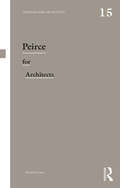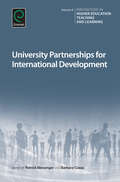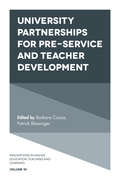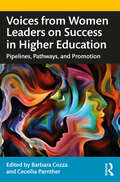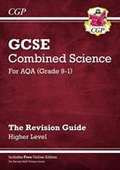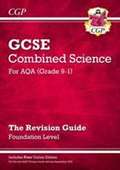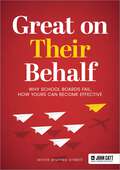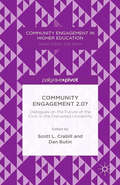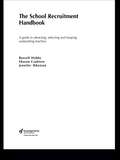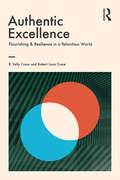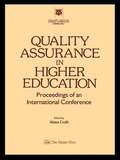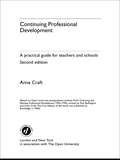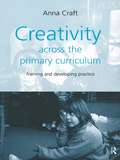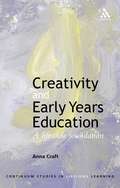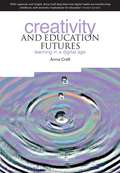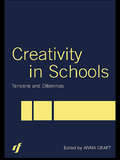- Table View
- List View
Peirce for Architects (Thinkers for Architects)
by Richard CoyneIdeas gain legitimacy as they are put to some practical use. A study of Charles Sanders Peirce (1839-1914) supports this pragmatism as a way of thinking about truth and meaning. Architecture has a strong pragmatic strand, not least as we think of building users, architecture as a practice, the practical demands of building, and utility. After all, Vitruvius placed firmness and delight in the company of utilitas amongst his demands on architecture. Peirce (pronounced 'purse') was a logician, and so many of his ideas are couched in terms of formal propositions and their limitations. His work appeals therefore to many architects grappling with the digital age, and references to his work cropped up in the Design Methods Movement that developed and grew from the 1950s. That movement sought to systematise the design process, contributing to the idea of the RIBA Plan of Work, computer-aided design, and various controversies about rendering the design process transparent and open to scrutiny. Peirce’s commitment to logic led him to investigate the basic elements of logical statements, notably the element of the sign. His best-known contribution to design revolves around his intricate theory of semiotics, the science of signs. The study of semiotics divided around the 1980s between advocates of Peirce’s semiotics, and the broader, more politically charged field of structuralism. The latter has held sway in architectural discourse since the 1980s. Why this happened and what we gain by reviving a Peircean semiotics is the task of this book.
Peirce for Architects (Thinkers for Architects)
by Richard CoyneIdeas gain legitimacy as they are put to some practical use. A study of Charles Sanders Peirce (1839-1914) supports this pragmatism as a way of thinking about truth and meaning. Architecture has a strong pragmatic strand, not least as we think of building users, architecture as a practice, the practical demands of building, and utility. After all, Vitruvius placed firmness and delight in the company of utilitas amongst his demands on architecture. Peirce (pronounced 'purse') was a logician, and so many of his ideas are couched in terms of formal propositions and their limitations. His work appeals therefore to many architects grappling with the digital age, and references to his work cropped up in the Design Methods Movement that developed and grew from the 1950s. That movement sought to systematise the design process, contributing to the idea of the RIBA Plan of Work, computer-aided design, and various controversies about rendering the design process transparent and open to scrutiny. Peirce’s commitment to logic led him to investigate the basic elements of logical statements, notably the element of the sign. His best-known contribution to design revolves around his intricate theory of semiotics, the science of signs. The study of semiotics divided around the 1980s between advocates of Peirce’s semiotics, and the broader, more politically charged field of structuralism. The latter has held sway in architectural discourse since the 1980s. Why this happened and what we gain by reviving a Peircean semiotics is the task of this book.
University Partnerships for International Development (Innovations in Higher Education Teaching and Learning #8)
by Barbara Cozza Patrick BlessingerThis volume examines the diverse ways universities and colleges around the world are partnering and collaborating with other institutions to fulfill their missions and visions. University partnerships not only include collaborations between universities but also include university-school (basic education) collaborative partnerships to improve local school systems. The increasing pressures to remove access and participation barriers, and the increasing pressures to mitigate practices that restrict the free flow of education across borders have created a growing global space for educational services of all types. As a result, traditional institutional boundaries have expanded to better respond to increasing pressures placed on them by the growing demand for higher education services. The boundaries between educational institutions and other entities such as government, business, and non-profit organizations have become more fluid and this has resulted in increased involvement by institutions, faculty, and students in activities outside the traditional boundaries of the classroom. This edited volume will specifically explore university partnerships for international development.
University Partnerships for Pre-service and Teacher Development (Innovations in Higher Education Teaching and Learning #10)
by Barbara Cozza Patrick BlessingerThis volume examines the diverse ways in which universities and colleges around the world are partnering and collaborating with other institutions to fulfill their missions and visions. University partnerships not only include collaborations between universities but also include university-school (basic education) collaborative partnerships to improve local school systems. The increasing pressures to remove access and participation barriers, and to mitigate practices that restrict the free flow of education across borders, have created a growing global space for educational services of all types. As a result, traditional institutional boundaries have expanded to better respond to the increasing pressures placed on them by the growing demand for higher education services. This edited volume will specifically explore university partnerships for preservice and teacher development.
University Partnerships for Pre-service and Teacher Development (Innovations in Higher Education Teaching and Learning #10)
by Barbara Cozza Patrick BlessingerThis volume examines the diverse ways in which universities and colleges around the world are partnering and collaborating with other institutions to fulfill their missions and visions. University partnerships not only include collaborations between universities but also include university-school (basic education) collaborative partnerships to improve local school systems. The increasing pressures to remove access and participation barriers, and to mitigate practices that restrict the free flow of education across borders, have created a growing global space for educational services of all types. As a result, traditional institutional boundaries have expanded to better respond to the increasing pressures placed on them by the growing demand for higher education services. This edited volume will specifically explore university partnerships for preservice and teacher development.
Voices from Women Leaders on Success in Higher Education: Pipelines, Pathways, and Promotion
by Barbara Cozza Ceceilia ParntherThis book assists aspiring and current women leaders on how to advance into higher education leadership roles. Drawn from research and the lived experiences of women and non-binary people in higher education leadership, this book serves as a guide in understanding the gender disparity in higher education leadership and how women leaders forge pathways to promotion and success through systemic barriers, obstacles, and a lack of representation. A critical review of traditional leadership theory offers an opportunity to reimagine how effective leadership is framed and valued in higher education. Chapter authors and case studies explore the intersections of multiple identities and their impacts on leadership through lenses, including institutional type, functional areas, ability, gender identity, sexuality, race, and ethnicity. Focusing on a bridge from theory to practice that is designed to empower and inspire women leaders at all levels of the spectrum, this book is ideal reading for higher education scholars, students, and faculty aspiring to become leaders.
Voices from Women Leaders on Success in Higher Education: Pipelines, Pathways, and Promotion
by Barbara Cozza Ceceilia ParntherThis book assists aspiring and current women leaders on how to advance into higher education leadership roles. Drawn from research and the lived experiences of women and non-binary people in higher education leadership, this book serves as a guide in understanding the gender disparity in higher education leadership and how women leaders forge pathways to promotion and success through systemic barriers, obstacles, and a lack of representation. A critical review of traditional leadership theory offers an opportunity to reimagine how effective leadership is framed and valued in higher education. Chapter authors and case studies explore the intersections of multiple identities and their impacts on leadership through lenses, including institutional type, functional areas, ability, gender identity, sexuality, race, and ethnicity. Focusing on a bridge from theory to practice that is designed to empower and inspire women leaders at all levels of the spectrum, this book is ideal reading for higher education scholars, students, and faculty aspiring to become leaders.
CGP GCSE Combined Science for AQA (Grade 9-1): The Revision Guide, Higher (Braille file available upon request)
by CpgAn accessible version of this book is available. Unfortunately, we are currently unable to host this book on RNIB Bookshare as it is a large file. Send an email to Bookshare@rnib.org.uk with the subject heading: 400MB+ File Request Include the title and ISBN of the book you require. We will send the file directly to your inbox using WeTransfer. If you have any problems, please do not hesitate to get in touch with us.
New Grade 9-1 GCSE Combined Science: AQA Revision Guide with Online Edition - Foundation (Braille file available upon request
by CpgAn accessible version of this book is available. Unfortunately, we are currently unable to host this book on RNIB Bookshare as it is a large file. Send an email to Bookshare@rnib.org.uk with the subject heading: 400MB+ File Request Include the title and ISBN of the book you require. We will send the file directly to your inbox using WeTransfer. If you have any problems, please do not hesitate to get in touch with us.
Great On Their Behalf: Why School Boards Fail, How Yours Can Become Effective
by Airick Journey CrabillSchool systems nationwide are struggling to excel as they lurch from crisis to crisis-teacher shortages, school shootings, high turnover rates, weak discipline systems, and more. These things can pull the focus of school boards away from why school systems exist: to educate students. Airick Journey Crabill has a track record of helping school systems improve student literacy, numeracy, and career and college readiness rates while simultaneously strengthening the school's financial and operational standing. Great on Their Behalf is your practical guide to igniting the transformation of your school board and enabling it to create the conditions for improving what students know and can do.Step by step, the exercises in this book inspire board members to adopt a student-outcomes-focused mindset as they reevaluate their impact on those they serve. It challenges them to explore effective ways to focus on what students need.Then it provides the necessary knowledge and skills for school boards to empower their students for success.
Community Engagement 2.0?: Dialogues On The Future Of The Civic In The Disrupted University (Community Engagement in Higher Education)
by Scott L. CrabillAs higher education is disrupted by technology and takes place less and less on campus, what does meaningful community engagement look like? How can it continue to enrich learning? In Community Engagement 2.0? , Crabill and Butin convene a dialogue: five writers set out theoretical and practical considerations, five more discuss the issues raised.
The School Recruitment Handbook: A Guide to Attracting, Selecting and Keeping Outstanding Teachers
by Sharon Crabtree Russell Hobby Jennifer IbbetsonGood teachers are distinguished by their characteristics - passion, integrity, initiative, confidence and more - yet recruitment tends to focus on skills and knowledge. Skills are vital, but are not the whole picture. This handbook provides a comprehensive technique for spotting and assessing the deeper characteristics of outstanding teachers during interview, using the Hay McBer research into effective teaching. Spotting an outstanding teacher, however, is wasted if they are not attracted to the school. Included in this guide is a means of evaluating, improving and communicating a school's attractiveness to candidates and existing staff. Providing a pathway through the complex recruitment process - from defining the school's needs to welcoming the new recruit into the school - this book includes: research into teacher effectiveness critical incident interviews definition and attraction assessment induction. Presenting surveys, original research into effective teaching, and interviews with recruiters and recruits, this lively guide offers practical advice for all schools.
The School Recruitment Handbook: A Guide to Attracting, Selecting and Keeping Outstanding Teachers
by Sharon Crabtree Russell Hobby Jennifer IbbetsonGood teachers are distinguished by their characteristics - passion, integrity, initiative, confidence and more - yet recruitment tends to focus on skills and knowledge. Skills are vital, but are not the whole picture. This handbook provides a comprehensive technique for spotting and assessing the deeper characteristics of outstanding teachers during interview, using the Hay McBer research into effective teaching. Spotting an outstanding teacher, however, is wasted if they are not attracted to the school. Included in this guide is a means of evaluating, improving and communicating a school's attractiveness to candidates and existing staff. Providing a pathway through the complex recruitment process - from defining the school's needs to welcoming the new recruit into the school - this book includes: research into teacher effectiveness critical incident interviews definition and attraction assessment induction. Presenting surveys, original research into effective teaching, and interviews with recruiters and recruits, this lively guide offers practical advice for all schools.
Authentic Excellence: Flourishing & Resilience in a Relentless World (Giving Voice to Values)
by R. Kelly Crace Robert Louis CraceNever before have the pressures of a comparative and competitive world impacted on our sense of wellbeing, particularly among young adults. Building on the principles of Giving Voice to Values, which honors the complexity and difficulty of leading with our values, this book addresses the unique challenges faced by young adults. It provides a clear process that details how to harness natural wisdom to flourish through the relentless pace and pressure of today’s world. Moving beyond mere values clarification, Authentic Excellence helps the reader to develop a deeper relationship with their values and confidently express them, and builds effective coping skills to manage the relentless noise of our comparative and competitive world. Authentic Excellence answers five primary questions: How are young adults affected by this world of relentless change and pressure? Why are young adults vulnerable to a plateau that can negatively affect their resilience? What is the difference between fear-based excellence and authentic excellence and what role do values play in this distinction? What is necessary to move beyond fear-based excellence and why is it so hard? How do you train a deeper level of effectiveness that includes more consistent productivity, fulfillment and resilience?
Authentic Excellence: Flourishing & Resilience in a Relentless World (Giving Voice to Values)
by R. Kelly Crace Robert Louis CraceNever before have the pressures of a comparative and competitive world impacted on our sense of wellbeing, particularly among young adults. Building on the principles of Giving Voice to Values, which honors the complexity and difficulty of leading with our values, this book addresses the unique challenges faced by young adults. It provides a clear process that details how to harness natural wisdom to flourish through the relentless pace and pressure of today’s world. Moving beyond mere values clarification, Authentic Excellence helps the reader to develop a deeper relationship with their values and confidently express them, and builds effective coping skills to manage the relentless noise of our comparative and competitive world. Authentic Excellence answers five primary questions: How are young adults affected by this world of relentless change and pressure? Why are young adults vulnerable to a plateau that can negatively affect their resilience? What is the difference between fear-based excellence and authentic excellence and what role do values play in this distinction? What is necessary to move beyond fear-based excellence and why is it so hard? How do you train a deeper level of effectiveness that includes more consistent productivity, fulfillment and resilience?
Quality Assurance In Higher Education
by Alma CraftFirst Published in 1992. Routledge is an imprint of Taylor & Francis, an informa company.
Quality Assurance In Higher Education
by Alma CraftFirst Published in 1992. Routledge is an imprint of Taylor & Francis, an informa company.
Continuing Professional Development: A Practical Guide for Teachers and Schools
by Anna CraftFirst Published in 2004. Routledge is an imprint of Taylor & Francis, an informa company.
Continuing Professional Development: A Practical Guide for Teachers and Schools (Educational Management Ser.)
by Anna CraftFirst Published in 2004. Routledge is an imprint of Taylor & Francis, an informa company.
Creativity Across the Primary Curriculum: Framing and Developing Practice
by Anna CraftThis book takes an inspirational look at how to foster children's creativity as well as following the guidelines in the National Curriculum. The book: explores the nature of the creative mind investigates the role of play and the concept of creativity examines appropriate continuing professional development for teachers looks at the personal and professional identities of teachers considers ways of analysing and describing creative practice. This text looks at the bigger picture in education, asking what sort of systems need to be designed to develop children's learning in the 21st century. It will be a resource to teachers, head teachers and advisory staff committed to asking questions, encouraging play and not allowing problems or circumstances to block action.
Creativity Across the Primary Curriculum: Framing and Developing Practice
by Anna CraftThis book takes an inspirational look at how to foster children's creativity as well as following the guidelines in the National Curriculum. The book: explores the nature of the creative mind investigates the role of play and the concept of creativity examines appropriate continuing professional development for teachers looks at the personal and professional identities of teachers considers ways of analysing and describing creative practice. This text looks at the bigger picture in education, asking what sort of systems need to be designed to develop children's learning in the 21st century. It will be a resource to teachers, head teachers and advisory staff committed to asking questions, encouraging play and not allowing problems or circumstances to block action.
Creativity and Early Years Education: A lifewide foundation (Continuum Studies in Lifelong Learning)
by Anna CraftMost people accept that early years education should aim to develop children's creativity, but this raises a number of questions: What is creativity? How does it relate to such concepts as imagination, self-expression and intelligence? Why is it valuable?--and in what ways? Can creativity be taught? And, if so, how? And how can it be assessed?In this carefully-weighed, clearly written and scholarly study, Anna Craft answers these and related questions, providing in the process a comprehensive guide to creativity for all those who work with children in the early years.
Creativity And Education Futures (PDF): Learning In A Digital Age
by Anna CraftThe extent and rapidity of economic, social, technological, scientific, spiritual and environmental change means that children today grow up facing uncertainties and possibilities on an unprecedented scale. What kinds of education are appropriate when the possible futures that exist for children are so uncertain and so rapidly advancing? Where learning occurs in a Web 2.0 social environment as naturally as it does in the playground, playing field, front room or street? Where adults may continue to play and experiment far beyond their childhood in ways unimaginable even thirty years ago? Where creativity is increasingly both possible and expected of young people? Drawing on the ideas of 'wise creativity' and 'collective possibility thinking', this book explores the changing nature of society, childhood and youth and asks how education might need to change in response. How can education facilitate wise collective creativity which anticipates and constructs the future? This book discusses approaches to constructing imaginative educational futures which hear all voices, those of students, parents and professionals. "Creativity and Education Futures" will be of interest to those engaged in grappling with the messy and difficult task of transforming education, including those developing approaches to creative partnership.
Creativity in Schools: Tensions and Dilemmas
by Anna CraftCreativity in schools is changing, with greater emphasis being placed on creative skills across the curriculum than ever before. This shift has thrown up some challenging questions which this book tackles head-on in order to better understand the implications of this change and the effects on pedagogy and policy. The questions raised include: What is creative learning? How does it relate to creative teaching? How do we organize the curriculum to nurture creativity? What pedagogical strategies support creativity? How is creative learning different to effective learning? What responsibilities do schools have for stimulating creativity in relation to society, ethics and the wider environment? Laying out the key concepts in the current debate on creativity and placing them in a broader context based on practice, policy and research, this volume sets the agenda for future discussion and suggests practical ways to encourage pupils’ creative development in a new and more thoughtful way.
Creativity in Schools: Tensions and Dilemmas
by Anna CraftCreativity in schools is changing, with greater emphasis being placed on creative skills across the curriculum than ever before. This shift has thrown up some challenging questions which this book tackles head-on in order to better understand the implications of this change and the effects on pedagogy and policy. The questions raised include: What is creative learning? How does it relate to creative teaching? How do we organize the curriculum to nurture creativity? What pedagogical strategies support creativity? How is creative learning different to effective learning? What responsibilities do schools have for stimulating creativity in relation to society, ethics and the wider environment? Laying out the key concepts in the current debate on creativity and placing them in a broader context based on practice, policy and research, this volume sets the agenda for future discussion and suggests practical ways to encourage pupils’ creative development in a new and more thoughtful way.
